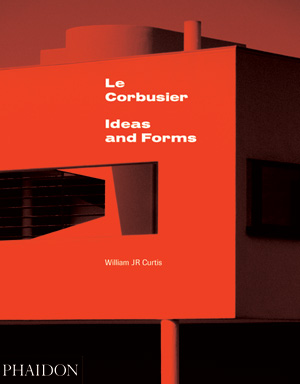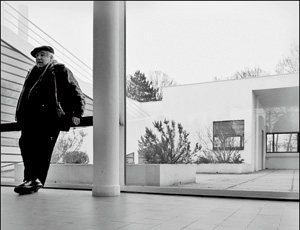In the preface to his classic Le Corbusier: Ideas and Forms, published in 1986 and for the quarter century since the most thoughtful and complete analysis of the architect, William J.R. Curtis compared his subject's impact to that of Freud, Joyce, and Picasso. But why stop there? If the pronouncement-making passion of the early Corbusier makes him another Freud (explaining away the darkness, an answer for everything), then the later Corbusier—the architect of post-rational dreamscapes like La Tourette and Ronchamp —is another Karl Jung. There simply is no viable extra-architectural comparison. If Le Corbusier is Joyce for the rigorous novelty of the Villa Savoye, then his earlier villas show him to be a sumptuously intelligent Nabokov. And, of course, Picasso, looked at a certain way, was only a Corbusier who failed to build.
Curtis may get closest when he compares the architect's influence to Palladio's. Our modernism—or our manner of practicing architecture now—remains Corbusian through and through. In character, privileging the rational and irrational in equal parts; in method, attempting to achieve a personal synthesis while whipsawing between inspirations; and in form itself, we are all his descendants. Architecture today is never nearly so Wrightian, so Gropian, or so Kahnian. And, if it may at times appear glassily, griddily Miesian, we need only remember that Le Corbusier also got there first.
So go back and read about the man Charles Edouard Jeanneret became and the things he thought and did. There is, still, no better single source than William Curtis. In preparing this thoroughly updated and lavishly published second edition of Ideas and Forms, he has sifted again through Le Corbusier's minutely archived life and work—what Curtis acknowledges is an obsession—assimilating new research by others and correcting some points he found were made less certain by the passage of years. It is an historian's task but undertaken with a critic's zeal. Trying at all points to balance his narrative between Corbusier's life, the political and cultural forces acting on that life, the architect's work in many different media, and the particular context for its creation, Curtis needs that strong critical center as a guide for his curiosity.
There is no manifesto here. You won't find the “hidden ideological commitments” that the author, in one of four essay-like chapters in a new final section of the book, suggests play a role in too many contemporary Corbusier studies. As there are no new forms to examine, this edition necessarily focuses anew on the man's ideas. It examines “not just theories and lyrical expressions in texts,” Curtis writes, but also those that are implicit in images and constructions. As a result, it shows many more drawings, including sketches, the intimacy of which forms a pleasant contrast to the panopticon sweep of the text.
Curtis writes that “Le Corbusier had a rare capacity to imagine spaces during the design process and to materialize architectural ideas and intuitions.” This edition of Ideas and Forms, though striving for and achieving something like a total understanding of the forces affecting Corbusier's life and work, is at root concerned with exploring one thing: that “rare capacity”—which is to say, the ability to turn life into buildings. And that's why, architects, yes: you'll need to buy this new version of a book that you probably already own and have already read.
Philip Nobel is the editorial director of SHoP Architects and the author of Sixteen Acres: Architecture and the Outrageous Struggle for the Future of Ground Zero.



Post a comment to this article
Report Abusive Comment